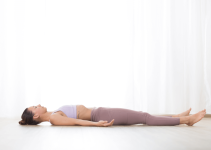- Open eyes meditation
- Benefits
- Techniques
- Closed eyes mediation
- Benefits
- Techniques
- Which one is for you?
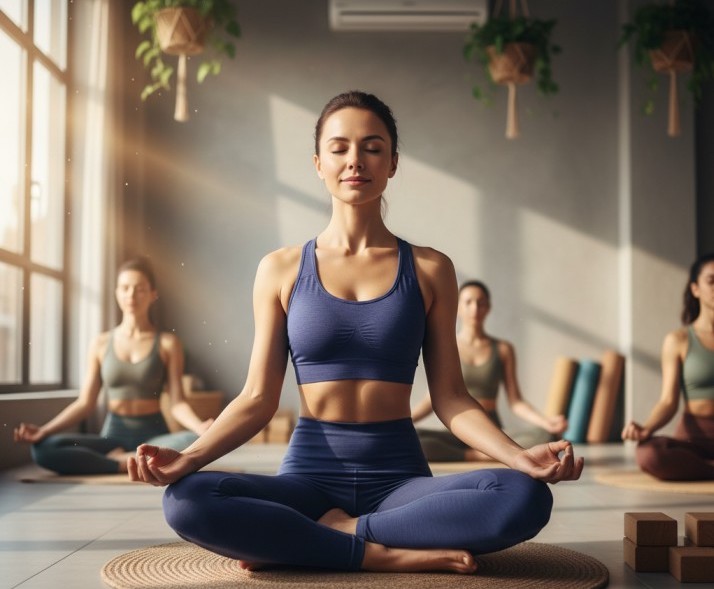
People who practise meditation can attest to the many benefits it offers, especially for mental health. It helps calm your restless thoughts often called the “monkey mind” and brings your focus to the present moment.
If you’re new to meditation, you may have noticed that some people meditate with their eyes closed, while others keep them open. This doesn’t mean one way is right and the other wrong.
Both open-eye and closed-eye meditation are valid approaches, each with its own purpose and benefits.
In this article, we explore the differences between open-eye and closed-eye meditation, their benefits, and techniques to help you decide which one suits you best.
Open eyes meditation
In yoga, Trataka and Shambhavi Mudra Meditation are a couple of famous methods that advocate open eyes meditation. While the eyes may not be opened fully, keeping a soft gaze and partially open eyes are the crucial element in the above meditation techniques.
It will also be surprising to know that almost all Buddhist meditation methods ask for the eyes to not be fully closed. If you have looked at the various depiction of Buddha, you will see that his eyes also remain open in most meditation positions.
Open eyes meditation is thought to better connect you with your surroundings and environment. It also encourages mindfulness. Moreover, people who have practiced meditation with open eyes say that they were able to concentrate better and control their thoughts.
Let us look at some benefits of this meditation style.
Benefits of meditation with open eyes
- Supports you in remaining attentive and concentrated.
- Help you focus and concentrate.
- Assists you in becoming more mindful of your environment.
- Allows you to think more clearly.
- Encourages you in staying in the present moment.
- Enable you in becoming more conscious of your thoughts and feelings.
- Aid in the reduction of tension and anxiety.
- Can facilitate you in reaching out to your inner self.
- Can be a great means of personal growth and transformation.
- Easy to practice anywhere.
- You can integrate meditation with your daily routine as well.
- Can enhance your creativity.
Open eyes meditation techniques
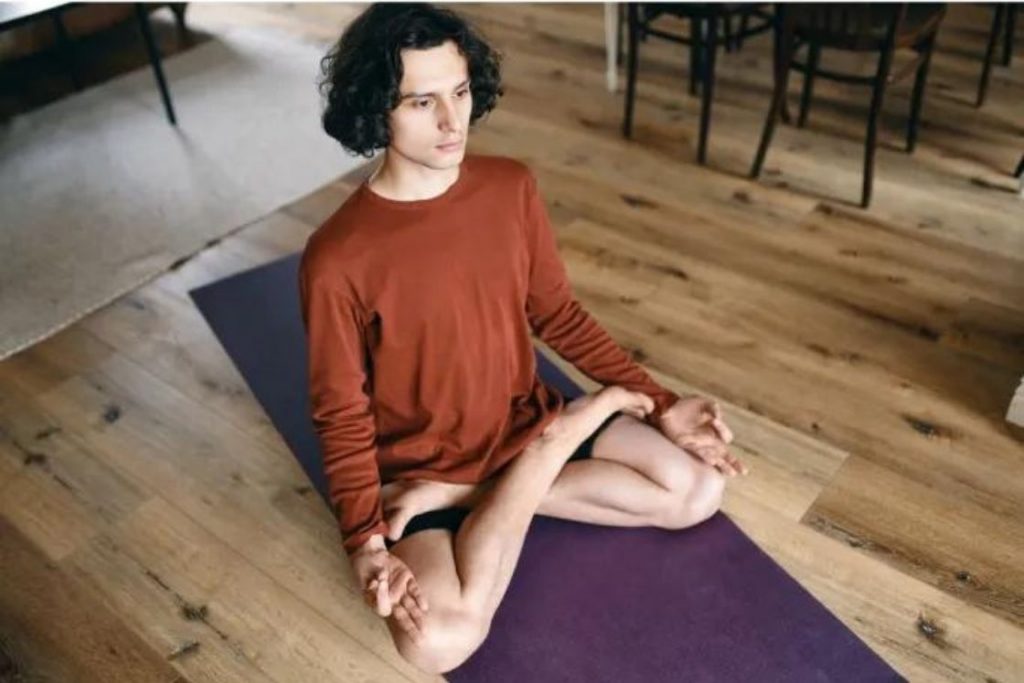
For open eyes meditation, the eyes are generally kept fully opened or half-opened to completely concentrate on the object of your focus. You may concentrate on a candle flame, an image of a deity, nose tip, eyebrows center or a serene picture.
For example, walking meditation is also a type of open eyes meditation wherein you are mindful of your surroundings and experience the sensations of the environment.
While there are not many open eyes meditation methods to practice, below are some common techniques:
1. Trataka or candle gazing meditation
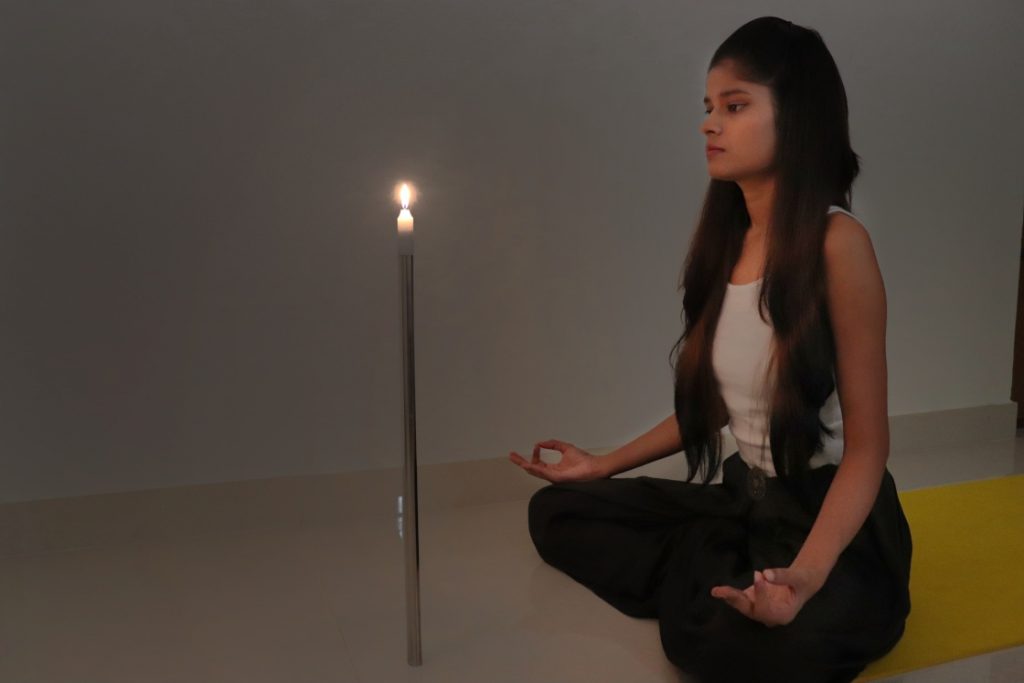
Trataka means steady gaze. In this open-eye meditation technique, you look at a stationary object for extended periods. It helps with increasing concentration, cleansing the eyes, and stimulating the third eye chakra.
By gazing at a still object, you are restricting eyeball movement which calms your mind and gives you mental peace. This also improves your memory and soothes your nervous system.
The most common method of practicing trataka is with a candle flame.
Steps to perform
- Place a burning candle 3-4ft away so that the flame is level with the eyes.
- Sit in the meditative position with your back straight and your head aligned with the spine.
- Place your hands in Gyan mudra or any mudra that helps enhance concentration.
- Bring your gaze to the bottom of the flame, which is the most stable, and focus on it without blinking.
- Your eyes may start to burn and water after some time, which is normal. You can close your eyes at this point and concentrate on the mental image of the flame.
- Open your eyes when the mental image has faded and repeat the process.
- Start with an initial time of 5 minutes and gradually build up till 30-45 minutes.
2. Zazen meditation
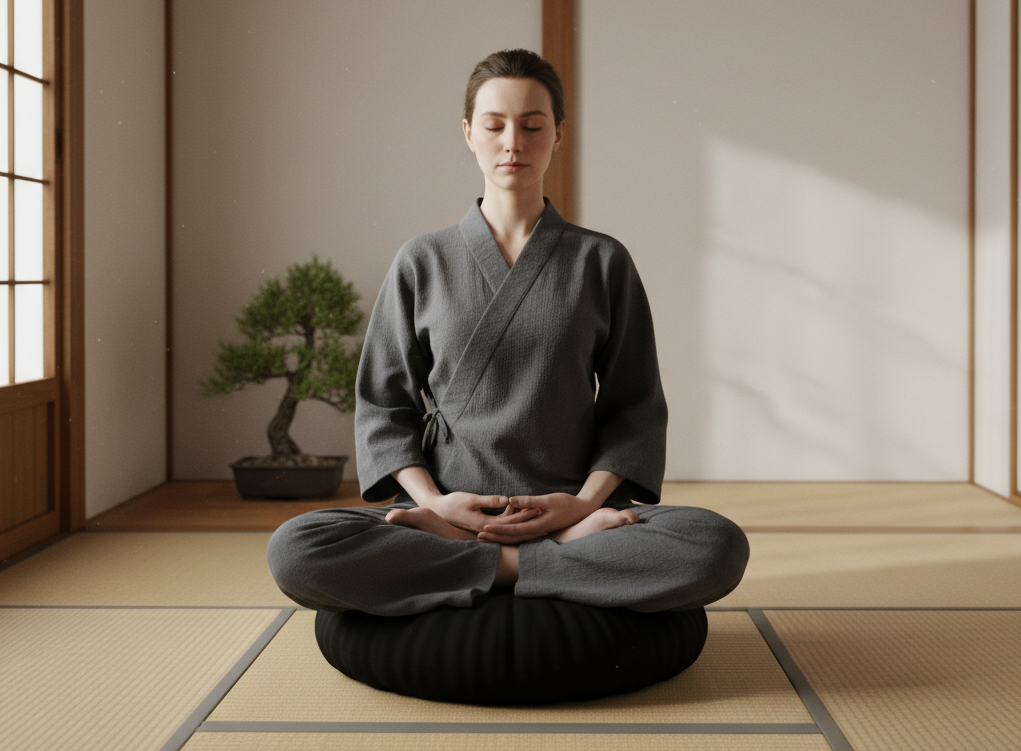
Zazen translates to sitting meditation. It is the meditative component of Zen. The purpose of zazen is to simply sit, that is, to stop all judgmental thinking and let words, ideas, images, and thoughts pass by without being immersed in them.
The sitting posture, hand placement, spine alignment, partially closed eyelids, and general awareness are all important aspects of zazen practice.
You are not required to focus on any object or your breath during zazen meditation. You simply sit in a comfortable position and focus on the current moment without thought.
Traditionally, zazen is performed while facing a wall to avoid distraction and limit your mind to wander.
Steps to perform
- The sitting posture in Zazen is based on Vairochana’s Seven Point Posture, which specifies the placement and alignment of the spine, hand, eyes and gaze, head, mouth, and sitting form.
- The Lotus pose, Half lotus, Burmese (easy pose), and Seiza(Thunderbolt or hero pose) are the sitting poses that can be used for the practice.
- After sitting in your preferred pose, keep your eyes partially open and bring your hands in Dhyan Mudra. Place your left palm, over the right, both the palms facing upwards. The tips of the thumbs slightly touch each other.
- Keep your hands in front of your navel slightly away from your body.
- Take a deep inhalation from the nose and exhale by rounding your lips. Follow it up by breathing normally through your nose for the entirety of the meditation session.
- When your mind drifts, keep returning to each breath to refocus your mind.
3. Shambhavi mudra meditation
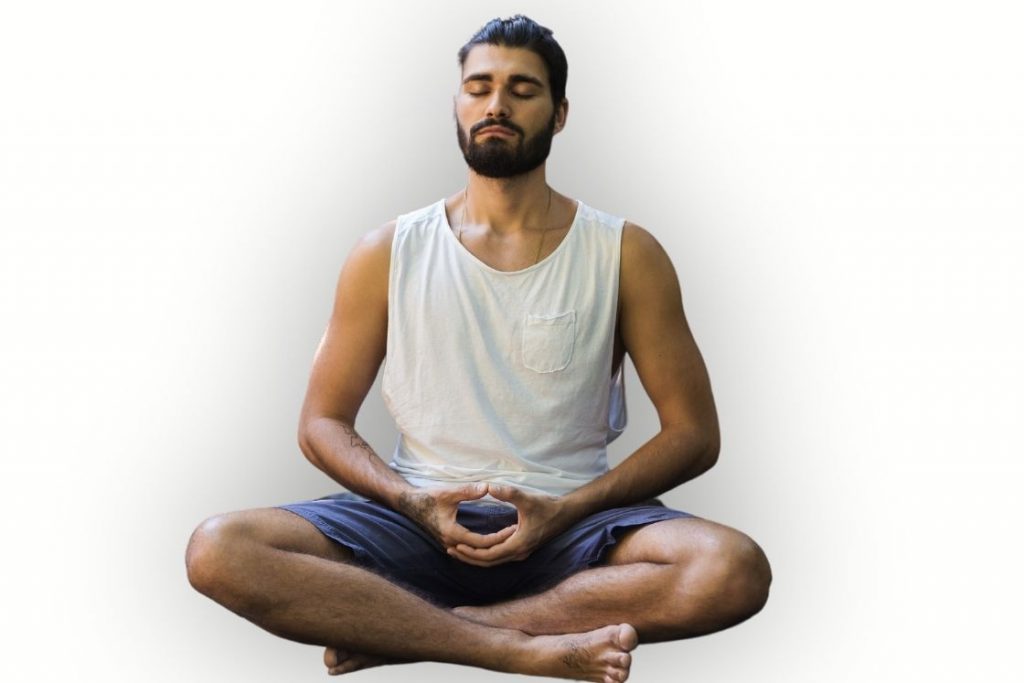
This meditation technique is well known for the movement of eyes while keeping them opened and closed at its advanced stage. It is initially performed with eyes opened and only when the meditator has gained some mastery over the method of the movement of the eyes, they can proceed to perform this technique with closed eyes.
It is said to stimulate the Kundalini shakti and the third eye chakra due to its focal point being the middle of the eyebrows. Through this, you can enhance your self-awareness and connect with the higher realm.
Practicing trataka before performing this meditation is a way to train the eye muscles to keep extended focus.
Steps to perform
- Sit in any comfortable meditative pose, preferably Padmasana, Siddhasana/Sukhasana.
- Keep the head and spine straight, adopt Gyan mudra with both hands and place them on the thighs or knees and relax your entire body.
- Your eyes will remain open for the entire duration of the practice.
- Without moving the head, gently bring your gaze towards the center of the brows. An easy way to identify the center is to focus on the V-shape juncture. If you can locate this shape, that means you are gazing in the right direction.
- If the V- formation is not seen, the gaze is not directed upward and inward correctly.
- Hold your gaze here for as long as you can.
- Initially, it will be difficult and you may start feeling a strain in your eyes. Bring your eyes to the normal position, close your eyes to relax them for a few seconds, and then resume the practice.
- When your eyes start to feel tired or watery, bring your eyes to the normal position and close them. After a few minutes resume your practice.
- Practice at least 10-15 rounds of Shmabhavi Mudra.
4. Walking meditation
Though this is not a formal meditation technique, walking meditation is followed actively in the Buddhist tradition. It is generally done to facilitate movement after sitting for a long duration in meditation. It is known as kinhin.
In traditional Buddhism, practitioners walk inside a room, either slowly or briskly, in a circle. However, it can also be done by practicing mindfulness.
Walking meditation can also be practiced in your daily life. All you need is a space that is free of obstacles such as traffic, stones, pebbled pathways, roots of trees, etc. Your garden can be an ideal space.
Steps to perform
- In the beginning, start walking slowly. Let your hands swing freely by your side or you can keep them behind your back in a relaxed manner.
- Your gait should be natural and not forced with a straight upper body.
- Bring your attention to the way your body moves, especially your legs.
- After 5 minutes, focus on the sensation of your feet when connecting with the ground. If you are in your garden, notice how the grass feels, the smell and colors of the flowers, and touch a leaf to feel its texture as you are walking.
- If you realize that your mind has wandered, bring back your focus to the sensations of your walking.
- Once you are ready to end the meditation, slowly come to a stop and stand still for a few moments.
Closed eyes meditation
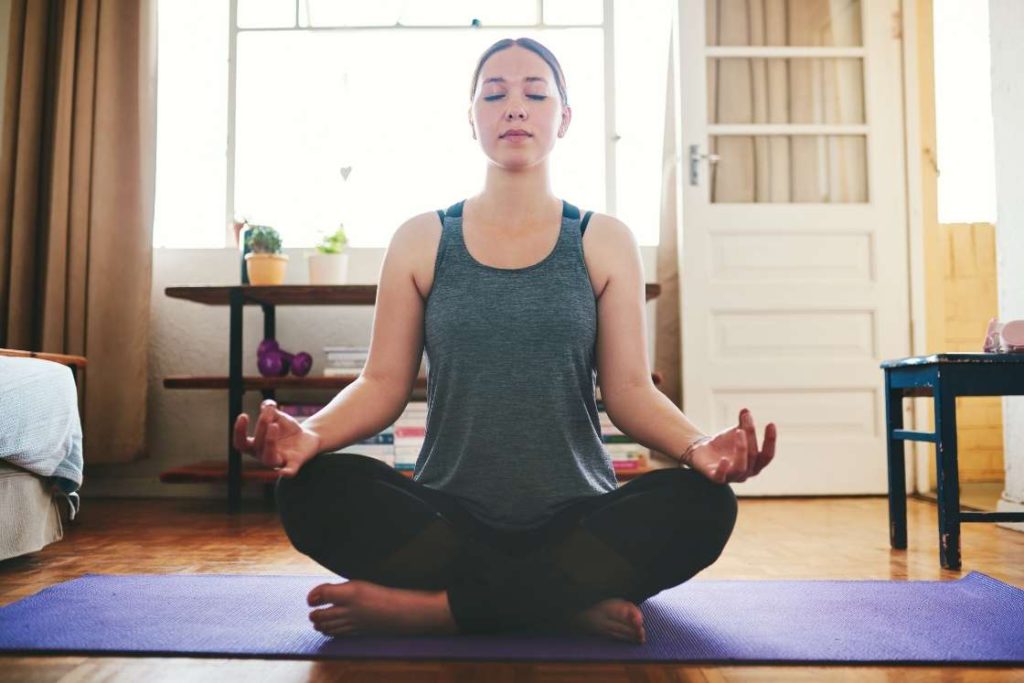
In general, meditation practice is synonymous with the practice of closing the eyes.
Closing your eyes during meditation provides a higher sense of concentration and wards off distractions. When you close your eyes, you can channel your focus inwards.
Closed eyes meditation can help you relax, ease the process of visualization, make you focus on your chakras, and make you focus on one thing at a time.
It is important to note that closed-eyes meditation can often lead to sleepiness. The practitioner often doesn’t realize that they have drifted off to sleep, which can defeat the purpose of the meditation.
However, it is still the most common method adopted by meditators when practicing their meditation.
Let us look at some of its benefits.
Benefits of meditation with closed eyes
- Helps in inner reflection and enhances self-awareness.
- Provides concentration on objects that require imagination and visualization.
- Can help you tune out external distractions.
- Keeping the eyes closed aids in relaxation when practiced before going to bed.
- It is a great tool to control your thoughts and bring back the focus on the breath.
- Enable you in becoming more conscious of your thoughts and feelings.
- Aid in the reduction of tension and anxiety.
Closed-eyed meditation techniques
Most of the meditations are closed-eyes meditation techniques and below are some of those techniques for practice:
1. Mindfulness meditation
Mindfulness meditation has its roots in Buddhist teachings, in which you just pay attention to your thoughts without making any judgments or analyses. You simply seek patterns and write them down.
You can choose a point of attention while monitoring any physiological sensations, thoughts, or feelings to assist you in practicing mindfulness meditation.
To help you practice mindfulness meditation, you can choose a focal point while observing any physiological sensations, thoughts, or feelings.
Steps to perform
- Find a quiet space without distractions and sit in a meditative pose.
- Close your eyes and take a minute to breathe in your stable rhythm to settle your mind.
- Begin by focusing on your breath. Concentrate on the sensation of each inhales and exhale.
- It is normal for thoughts, sounds, emotions, and body sensations to distract you from focusing on your breath.
- When you realize your distraction and your attention wandering away from your breath, gently bring back your focus on your breath.
- Let these distractions drift away without any judgments or analysis.
- Start with 10 minutes and work your way up to longer sessions.
2. Guided imagery or visualization
Guided imagery is one of the most prominent types of visualization techniques used by practitioners. With this strategy, the meditator imagines a positive scene that will soothe them and help them feel at ease with themselves. It helps you overcome any fear or get rid of an unpleasant emotion faster.
Visualization meditation involves imagining pleasant images, concepts, and symbols while also utilizing affirmations and mantras to calm the mind and relax the body.
Steps to perform
- Get in a comfortable meditative position, be it sitting or lying down. If you are sitting, make sure your back is straight yet your body is relaxed.
- Close your eyes and take a few moments to relax. Get your breathing to a stable rhythm.
- Start by visualizing a happy place that you have visited or want to visit, which will make you feel calm and at peace.
- Engage your senses and feel as many sensations as you can.
- Imagine yourself walking in this place and feeling calmer and relaxed.
- As you inhale, take in the positive feeling you derive from this place. And with an exhale, expel exhaustion, tension, and distress from your body.
- Stay in this mode for as long as you want to.
3. Progressive muscle relaxation
This approach will assist you in relaxing tense muscles caused by physical or emotional stress and worry. Relaxed muscles will help you sleep better, boost your mood, and calm your thoughts.
It can help you become more conscious of muscle pain, stiffness, or tightness.
Progressive muscle relaxation is best done before going to bed because it completely relaxes your body.
Steps to perform
- Lie down on your bed with your eyes closed on a comfortable yet firm surface.
- Take a few moments to relax and get your breathing to a stable rhythm.
- Tense and relax an area of muscles that are not affected. Perform a body scan from head to toes to see which areas need more focus.
- As you carefully inhale, contract the first group of muscles you encounter. Tension should be held for around five seconds. Make sure your muscles aren’t tense enough to induce pain.
- On exhale, relax these muscles and release the pain or tension held by these muscles. Visualize the muscles being tense and tight and then being released.
- Give a gap of 5-10 seconds and proceed with the next group of muscles.
- Perform this till you have gone through your entire body.
4. Mantra meditation
The goal of mantra meditation is to connect with one’s subconscious mind and then, via it, with greater cosmic energy. In yoga, it is regarded to be the most effective method for connecting with God or the greater divine force.
To achieve this harmonic connection between the inner soul and the higher cosmic spirit, sound energy is required. It permits us to temporarily disconnect from the outside world and rise above the petty difficulties that hold us back.
A mantra should be simple to memorize and recite. The mantra you choose is also influenced by your mood, thoughts, and emotions. It should help you to overcome any negative emotion or mood you’re experiencing.
Steps to perform
- Sit in a meditative position with a straight back and head aligned with your spine.
- Close your eyes and focus on your breath to stabilize your mind.
- Slowly and steadily repeat your mantra, focusing on the sound as much as possible. Repeat it in sync with your breath’s natural rhythm.
- As you begin to chant your mantra, keep a stable and even breathing through your nostrils. You can either chant the mantra out loud or silently.
- Return to the mantra as thoughts come, understanding that this is a normal part of the process. Simply acknowledge them, let them go, and continue your chant.
- You should practice this type of meditation daily for 5 to 20 minutes, or even longer if you need.
Should you meditate with your eyes open or closed?
The answer to this question is not definite. Each one has its benefits and it all depends on one’s preference. While some meditators may find closing their eyes more relaxing, others may feel keeping their eyes opened more visually stimulating for the mind.
However, you should try out both methods to see which suits your better.
Generally, if you are a beginner, it is recommended that you start with a closed eyes meditation. And if you want your meditation to be accessible anywhere, open eyes meditation is the one to choose.
Below are some pointers that can help you compare them:
- While you are feeling stressed and want to minimize the pressures on your awareness, you should meditate with your eyes closed. If you are calm and concentrated, meditating with your eyes open is more effective.
- For profound inner reinterpretation, such as studying and carefully re-experiencing the remnants of prior inner trauma, closed eyelids are preferable. Open eyes are more effective at transferring fresh opportunities into our daily life.
- Beginners who are still growing used to the practice should close their eyes. Individuals who have been meditating for a long time and are comfortable with how it works are more likely to open their eyes.
- When you’re tired, it’s not easier to close your eyes and you could risk falling asleep during meditation. If you want to stay awake when you’re tired, you may need to keep your eyes open.
- When you’re physically safe, closing your eyes is easier. When you’re not feeling well, keep your eyes open.
- If you’re psychologically healthy and stable closed eyes are more feasible, whereas open eyes are more encouraged when there is a history of trauma that makes closed eyes feel vulnerable.
- If you are sitting still, it is easier to close your eyes. When conducting meditation in motion, it’s essential to keep your eyes open.
